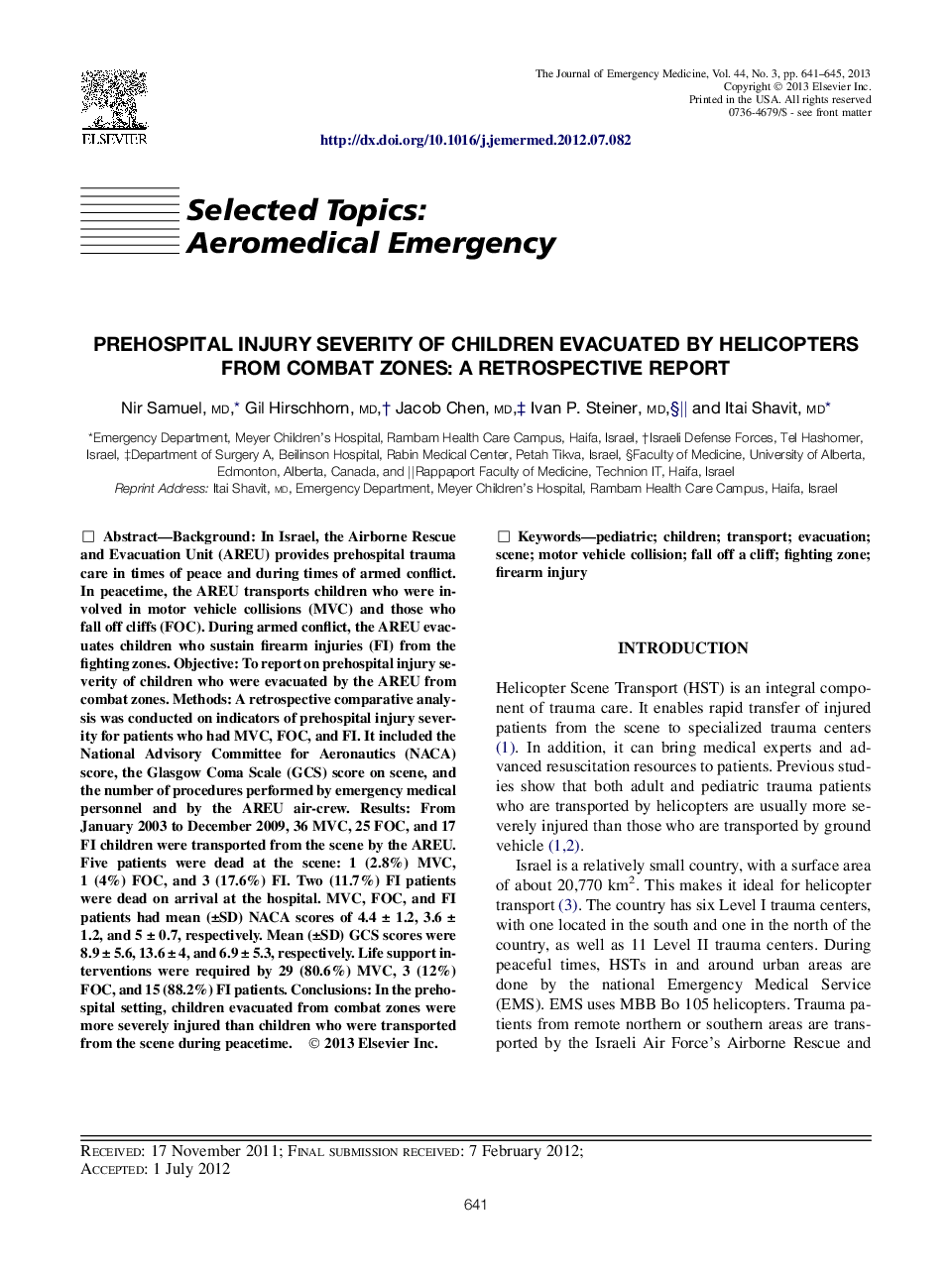| Article ID | Journal | Published Year | Pages | File Type |
|---|---|---|---|---|
| 3248512 | The Journal of Emergency Medicine | 2013 | 5 Pages |
BackgroundIn Israel, the Airborne Rescue and Evacuation Unit (AREU) provides prehospital trauma care in times of peace and during times of armed conflict. In peacetime, the AREU transports children who were involved in motor vehicle collisions (MVC) and those who fall off cliffs (FOC). During armed conflict, the AREU evacuates children who sustain firearm injuries (FI) from the fighting zones.ObjectiveTo report on prehospital injury severity of children who were evacuated by the AREU from combat zones.MethodsA retrospective comparative analysis was conducted on indicators of prehospital injury severity for patients who had MVC, FOC, and FI. It included the National Advisory Committee for Aeronautics (NACA) score, the Glasgow Coma Scale (GCS) score on scene, and the number of procedures performed by emergency medical personnel and by the AREU air-crew.ResultsFrom January 2003 to December 2009, 36 MVC, 25 FOC, and 17 FI children were transported from the scene by the AREU. Five patients were dead at the scene: 1 (2.8%) MVC, 1 (4%) FOC, and 3 (17.6%) FI. Two (11.7%) FI patients were dead on arrival at the hospital. MVC, FOC, and FI patients had mean (±SD) NACA scores of 4.4 ± 1.2, 3.6 ± 1.2, and 5 ± 0.7, respectively. Mean (±SD) GCS scores were 8.9 ± 5.6, 13.6 ± 4, and 6.9 ± 5.3, respectively. Life support interventions were required by 29 (80.6%) MVC, 3 (12%) FOC, and 15 (88.2%) FI patients.ConclusionsIn the prehospital setting, children evacuated from combat zones were more severely injured than children who were transported from the scene during peacetime.
